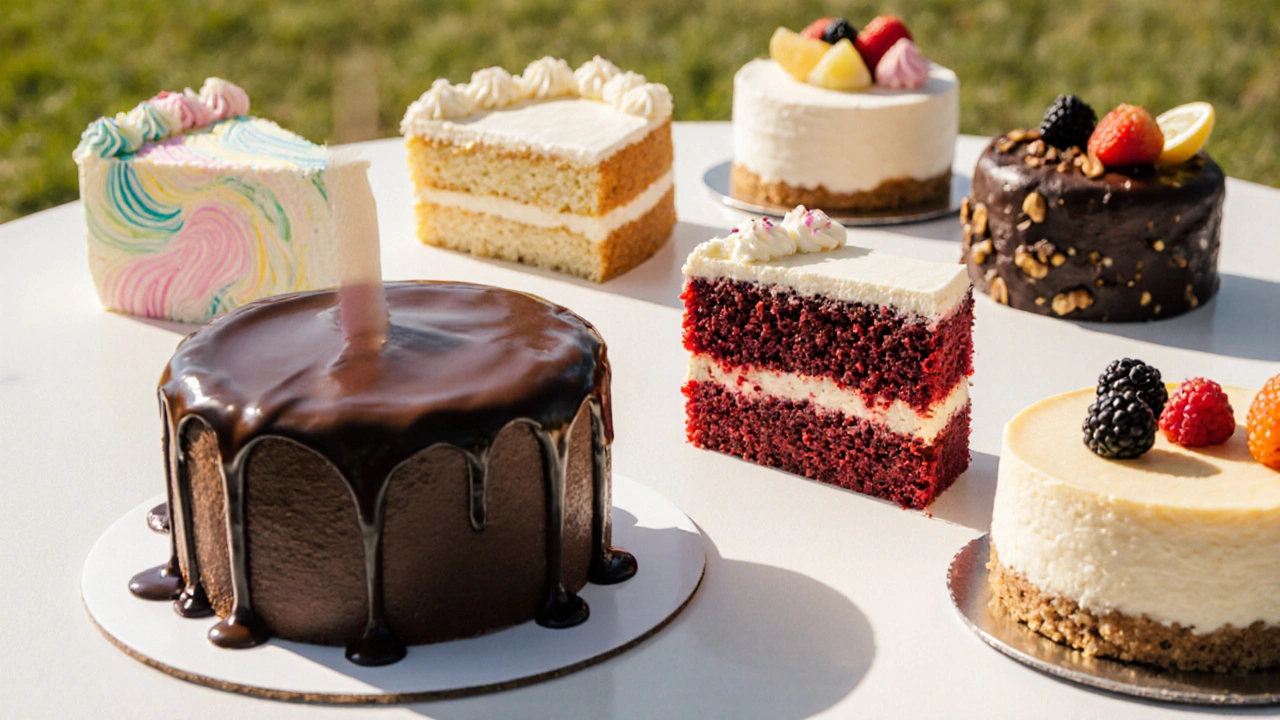
Which Cake Tastes the Best for a Birthday Celebration?
Discover the top birthday cakes, compare flavors, textures, and frosting to pick the most delicious cake for any celebration.
When working with cake ranking, the practice of scoring cakes on flavor, texture, appearance and overall enjoyment. Also known as cake evaluation, it lets bakers and sweet‑tooth fans decide which desserts earn a top spot.
One of the core pieces of any cake ranking system is dessert texture, how the crumb feels—light, moist, dense or airy. Texture influences perceived freshness and can make or break a slice. Another key factor is baking technique, the methods used to achieve the right rise, crumb structure and moisture level. Together these elements form the triple: cake ranking requires texture assessment and proper technique.
Knowing how to rank cakes helps you spot strengths and weaknesses before you serve guests. It also gives you a language to compare recipes—whether you’re testing a classic vanilla sponge or a bold red‑car themed creation. The practice links directly to cake decoration, the visual flair achieved with toppings, icing and themed toppers. A beautifully decorated cake can score high on looks but still fall short if the flavor or texture is off. That’s why many bakers treat ranking as a holistic review, not just a visual checklist.
Safety is another hidden pillar of cake ranking. dessert safety, ensuring ingredients are fresh, stored correctly and free from contamination protects diners and keeps your reputation intact. For example, knowing when a cheesecake should be refrigerated or how long fudge stays soft can affect both taste and health outcomes. In short, cake ranking includes safety considerations alongside taste, texture and décor.
Let’s break down the main attributes you’ll encounter in our post collection. First, we look at ingredient quality—how fresh eggs, butter and sugar set the stage for flavor. Next, we dive into technique tips, from whipping meringue for a perfect pavlova to chilling cookie dough for better spread. Then we cover decoration ideas, such as using red‑car toppers for themed parties. Finally, we add storage hacks that keep fudge soft and cheesecake safe. Each article ties back to the central idea of ranking cakes by measurable criteria.
When you start ranking, think of it as a simple scorecard. Assign 1‑5 points for flavor balance, 1‑5 for crumb texture, 1‑5 for visual appeal, and 1‑5 for safety practices. Add the numbers up and you have a clear ranking that tells you which recipes deserve repeat baking. This approach mirrors the way professional pastry chefs judge competitions, but it’s easy enough for a home baker to apply.
Below you’ll find a curated set of articles that unpack each component. Whether you’re curious about the perfect pavlova ingredients, the pros and cons of baked versus no‑bake cheesecake, or how to keep fudge from hardening, each guide gives you concrete steps to improve your scores. You’ll also see practical advice on freezing mascarpone for tiramisu, choosing vegan candy, and even navigating Costco’s half‑sheet cake options—topics that all feed into a more informed cake ranking process.
Ready to boost your dessert game? Browse the collection, pick the tips that match your current project, and start applying the ranking framework today. The insights ahead will help you turn ordinary cakes into top‑rated showstoppers while keeping everything safe and delicious.

Discover the top birthday cakes, compare flavors, textures, and frosting to pick the most delicious cake for any celebration.